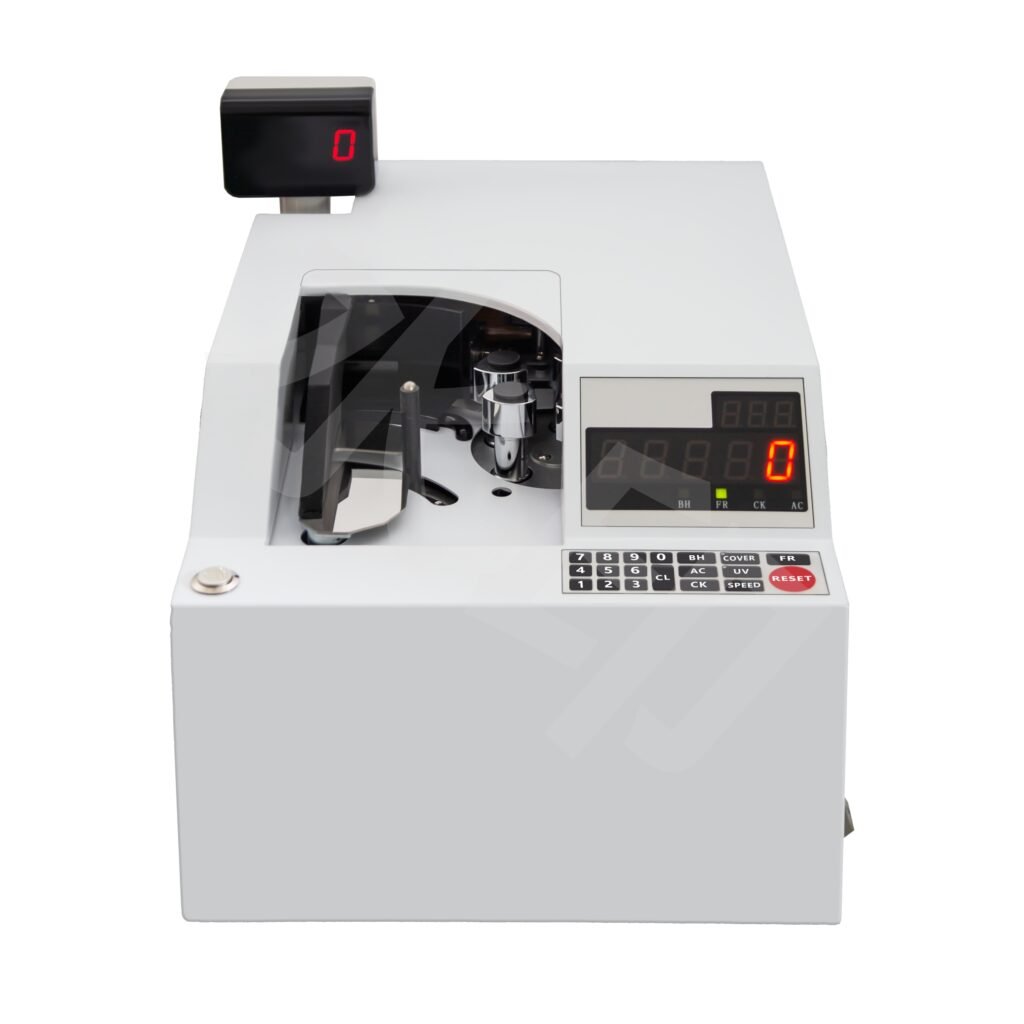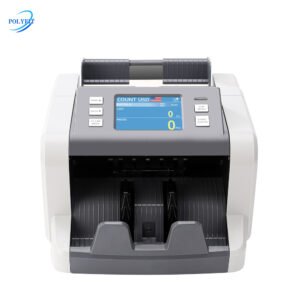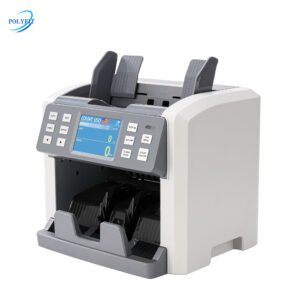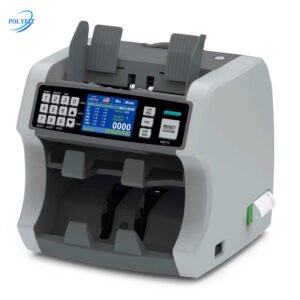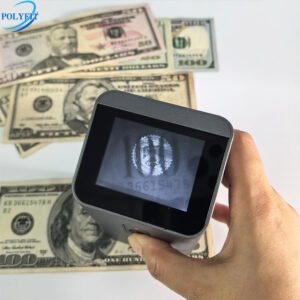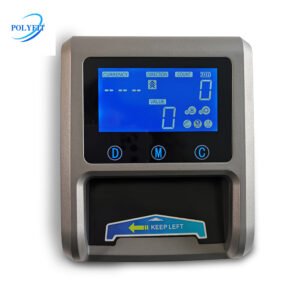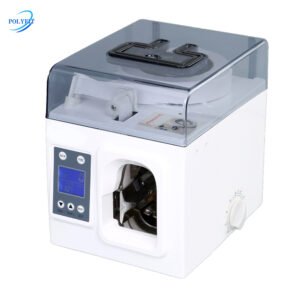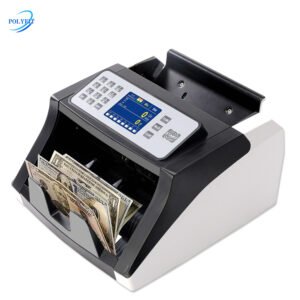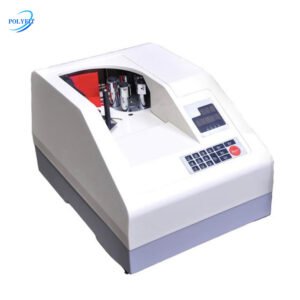A cash counter and verifier is a professional device specifically designed for accurately counting and verifying the quantity and authenticity of cash (banknotes/coins). Its core value lies in addressing the issues of low efficiency, high errors, and vulnerability to counterfeit money in manual counting. Its application scenarios are highly concentrated in fields that require frequent and large-scale cash handling, with strict demands on accuracy, security, and compliance. Specifically, these scenarios can be divided into the following categories:
I. Financial Institutions: Core Scenarios for Cash Handling
Financial institutions are the core application areas of cash counters and verifiers, as they are directly related to the accuracy and security of cash circulation. The specific scenarios include:
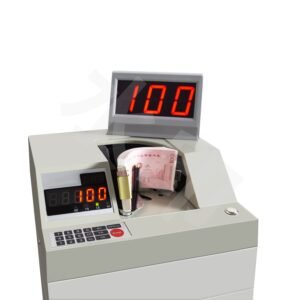
-
Bank Branches (Corporate/Personal Banking Windows)
- When bank tellers accept customer deposits (e.g., large cash deposits from enterprises, small change exchanges for individuals), they need to use cash counters and verifiers for secondary verification of cash quantity to avoid “cash discrepancies” (inconsistencies between the actual amount and the amount declared by the customer) caused by manual counting errors.
- When processing cash withdrawals (e.g., corporate petty cash, large cash withdrawals for individuals), cash counters and verifiers can quickly count the cash to be disbursed, ensuring the accuracy of the payment amount while verifying the authenticity of banknotes (to avoid accidental disbursement of counterfeit money).
-
Bank Vaults/Cash Centers
- When vaults receive cash handed over by various branches, high-capacity and high-speed cash counters and verifiers are used for batch counting to quickly check whether the total amount matches the data reported by the branches. At the same time, they sort cash (by denomination and newness) to prepare for subsequent allocation (e.g., replenishing ATMs and branches).
- When processing new banknotes issued by the central bank or recycled old banknotes, cash counters and verifiers can assist in “counting + quality inspection” (e.g., identifying damaged or stained banknotes) to ensure that the circulating cash meets the standards of the central bank.
-
ATM Operation and Maintenance
- Before loading cash into ATMs, maintenance personnel need to count the cash to be loaded using cash counters and verifiers to ensure that the cash inventory of each ATM matches the system records.
- During ATM cash collection (recovering unwithdrawn cash from the cash box), cash counters and verifiers can quickly check the “actual recovered amount” against the “ATM system-statistical amount” to detect abnormal situations such as cash jams or theft.
-
Securities Companies/Insurance Companies
- When some customers pay securities margins or insurance premiums in cash, financial personnel need to count the cash with cash counters and verifiers to ensure accurate recording of funds. Meanwhile, they retain counting records (some devices support data export) to meet financial compliance requirements.
II. Commercial Retail: Daily Cashier Reconciliation Scenarios
The retail industry receives cash frequently (especially in offline stores), so cash counters and verifiers are key tools for shift handovers and daily reconciliation. The specific scenarios include:
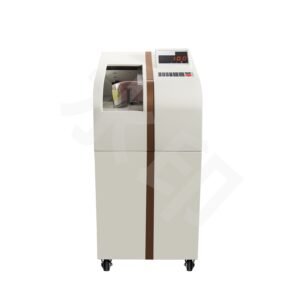
-
Large Supermarkets/Chain Convenience Stores
- During cashier shift handovers, cash counters and verifiers are used to count the cash received during the shift (distinguishing between banknotes and coins) to quickly check whether the “actual cash” matches the “cashier system-recorded amount”. Only when there is no discrepancy can the handover be completed, avoiding congestion caused by time-consuming manual counting.
- During daily store reconciliation, financial personnel use cash counters and verifiers to summarize the cash from all cash registers and compare it with the total system sales to detect issues such as cashier errors and counterfeit money.
-
Department Stores/Shopping Malls
- After stores (e.g., clothing, jewelry stores) close daily, sales staff use cash counters and verifiers to count the daily cash income, fill out payment slips with counting records, and submit them to the mall’s finance department to ensure timely and accurate fund collection.
-
Chain Restaurants/FMCG Stores
- After peak hours (e.g., lunch and dinner hours), catering stores need to quickly count the cash received. Cash counters and verifiers can efficiently process small change (e.g., 1-yuan, 5-yuan banknotes and coins), avoiding low efficiency in manual counting of small change.
- Some brand stores adopt a “centralized reconciliation model”. After counting cash with portable cash counters and verifiers, each store uploads the data to the headquarters’ financial system, allowing the headquarters to monitor the cash flow of each store in real time.
III. Public Services and Public Institutions: Administrative Fee Collection Scenarios
Cash fee collection in the public service sector must strictly adhere to the principles of “compliant revenue and expenditure” and “accurate amount”. Cash counters and verifiers are important tools for standardizing processes:
-
Transportation Ticketing (Buses/Subways/Stations)
- When bus companies collect cash from bus fare boxes daily, they need to use cash counters and verifiers for batch counting of coins and banknotes to quickly calculate the daily ticketing revenue while screening counterfeit money (e.g., counterfeit coins, altered banknotes).
- At manual ticket windows of railway stations and bus stations, after ticket sellers receive cash for tickets, they can use small cash counters and verifiers for secondary verification of the amount to avoid payment errors caused by large passenger flows.
-
Hospital Billing Windows
- When hospital outpatient and inpatient billing windows accept cash payments from patients (e.g., registration fees, medicine fees, hospitalization deposits), they need to use cash counters and verifiers to count the cash, ensuring the amount matches the payment slip while verifying the authenticity of banknotes (to prevent patients from accidentally paying counterfeit money or criminals intentionally using counterfeit money).
- During daily reconciliation, financial personnel use cash counters and verifiers to summarize the cash from each window and compare it with the billing system data to ensure accurate recording of medical fee funds.
-
Government Service Halls (Vehicle Management Offices/Tax Bureaus)
- When vehicle management offices collect driving license production fees and vehicle inspection fees, and tax bureaus collect cash taxes, staff need to use cash counters and verifiers to count the cash, ensuring the accuracy of administrative fees. Meanwhile, they retain counting records to meet the financial audit requirements of government affairs.
IV. Corporate and Institutional Finance: Internal Cash Management Scenarios
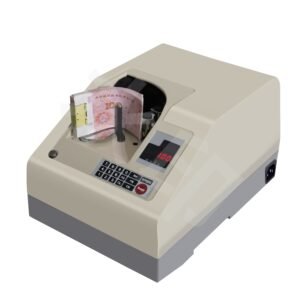
Various enterprises (especially those involving cash transactions or internal cash flow) need to use cash counters and verifiers to standardize cash management. The specific scenarios include:
-
Corporate Finance Departments (Cash Reconciliation/Disbursement)
- When enterprises receive cash payments from customers for goods, financial personnel use cash counters and verifiers to count and verify the authenticity, ensuring accurate recording of payment for goods.
- Some enterprises (e.g., manufacturing factories, small businesses) still pay salaries in cash. Financial personnel need to use cash counters and verifiers to split cash according to employees’ salary amounts to avoid amount errors during disbursement.
-
Logistics and Warehousing (Cash on Delivery, COD Scenarios)
- Some logistics services (e.g., delivery of large home appliances and furniture) support COD. Delivery staff carry portable cash counters and verifiers, count the cash received from customers on-site, and confirm the amount is correct before completing delivery to avoid subsequent reconciliation disputes.
-
Schools/Kindergartens (Tuition/Incidental Fee Collection)
- During the school opening season, when collecting tuition fees, meal fees, etc., in cash, financial personnel use cash counters and verifiers for batch counting to quickly check the “amount to be collected” against the “actually collected amount”. At the same time, they avoid low efficiency in counting caused by parents paying with small change.
V. Special Cash-Intensive Scenarios
In addition to the above mainstream scenarios, cash counters and verifiers are also used in some special fields with frequent cash transactions:
-
Lottery Outlets/Gaming Institutions (in compliant regions)
- Lottery outlets use cash counters and verifiers to count the amount when receiving cash from customers for lottery purchases or cashing out cash prizes, ensuring accurate transactions. In compliant gaming institutions, cash counters and verifiers also assist in verifying the authenticity and quantity of cash during chip redemption.
-
Pawnshops/Auction Houses
- When pawnshops receive cash pawnbroking funds from customers, or auction houses collect auction deposits and transaction proceeds, they use cash counters and verifiers to count the cash, ensuring the security and accuracy of funds. Meanwhile, they retain records for subsequent tracing.
-
Charitable Organizations (Cash Donation Counting)
- After receiving cash donations during charitable activities (e.g., charity galas, street fundraisers), staff use cash counters and verifiers to count the donated funds, and disclose the counting process and results to enhance the transparency of donations.
Core Value of Cash Counters and Verifiers (Scenario Adaptation Logic)
From the above scenarios, the application of cash counters and verifiers essentially addresses three core needs:
- Efficiency Improvement: Replaces manual counting (especially for small change and large amounts of cash), reducing the counting time from minutes to seconds.
- Error Avoidance: Uses mechanical accurate counting to reduce the risk of “missing counts or overcounts” in manual counting, avoiding economic losses.
- Security and Compliance: Most cash counters and verifiers integrate counterfeit money identification functions (e.g., ultraviolet, magnetic detection) and support data recording and export to meet the requirements of financial auditing and supervision.
Different scenarios have different requirements for cash counters and verifiers (e.g., bank vaults require “high-speed and large-capacity” devices, while convenience stores require “portable and small-sized” ones), but the core revolves around “the accuracy and efficiency of cash handling”.

